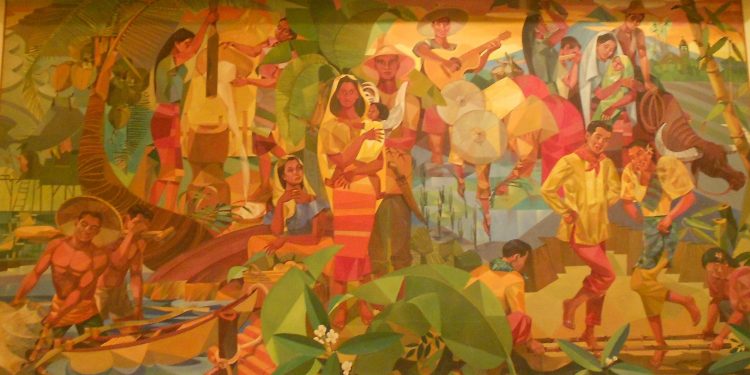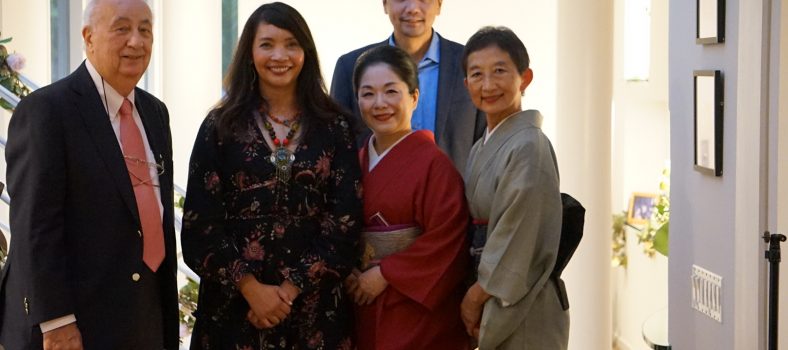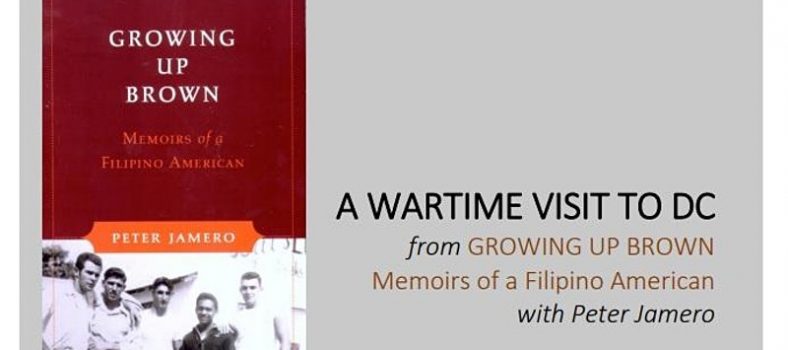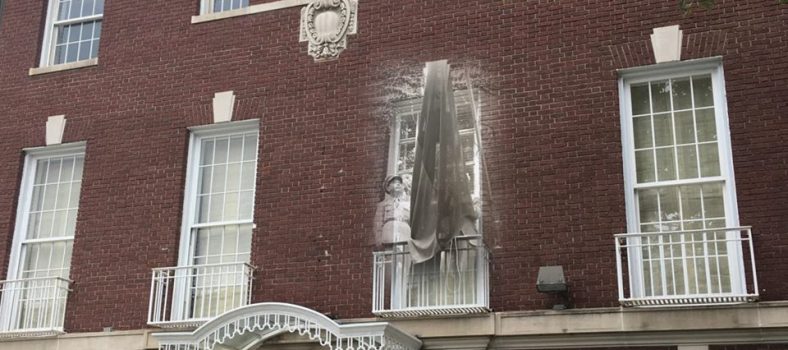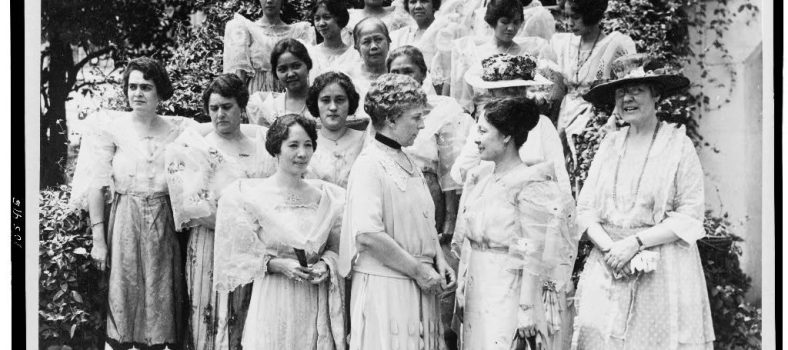Appreciating Philippine Culture and the Arts in Washington D.C.
Washington, D.C. – The US-Philippines Society in collaboration with the newly inaugurated Sentro Rizal Washington DC organized a presentation, Philippine Culture and the Arts: Reflections by Virgilio Almario, at the Philippine Embassy’s Carlos P. Romulo Hall, June 11. National Commission for Culture and the Arts (NCCA) Chair Virgilio Almario joined culture enthusiast Professor Erwin Tiongson for an informal discussion centered on noted Philippine artists and their works on display in museums and institutions in Washington DC. The event is one of many on-going activities held in commemoration of the 120th anniversary of Philippine Independence. Representatives of local museums, art clubs, academe and members of the Filipino American community attended this inaugural event.
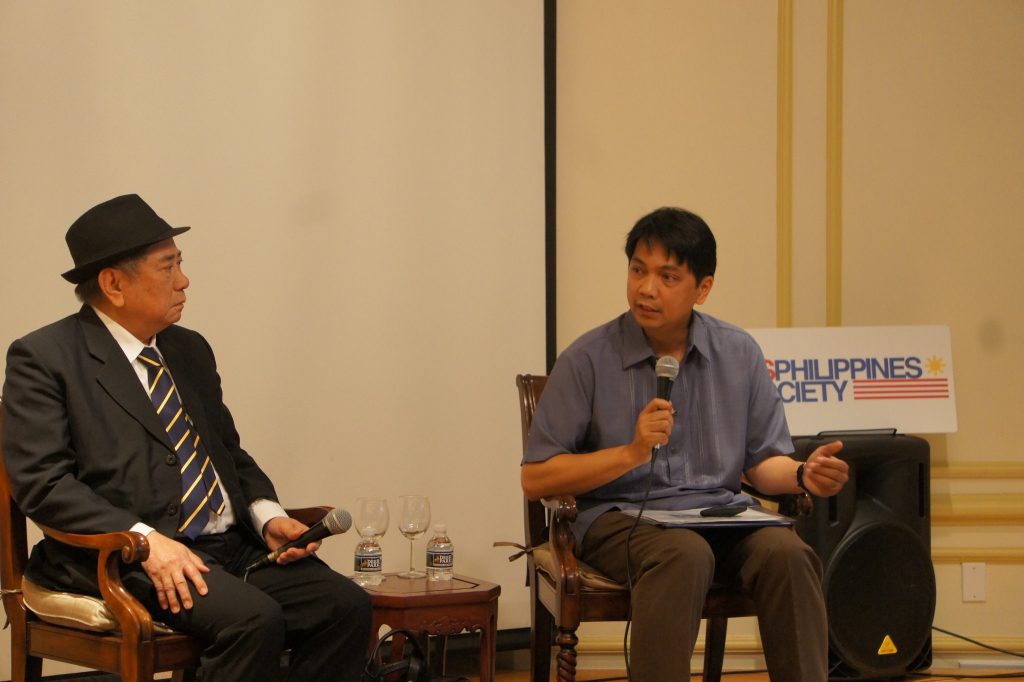
NCCA Chair Virgilio Almario (left) and Professor Erwin Tiongson (right)
Guillermo Tolentino
Featured artist Tolentino was a young sculptor who presented a small statue of mother and child with the inscription “PAX” (Peace) to US President Woodrow Wilson at the end of World War I. Professor Tiongson related how First Lady Edith Wilson secured a meeting between President Wilson and Tolentino. President Wilson facilitated Tolentino’s studies through the financial support of business leader Bernard Baruch. The sculpture adorns the fireplace in President Wilson’s bedroom at the Woodrow Wilson House on 2340 S Street, NW, Washington DC.
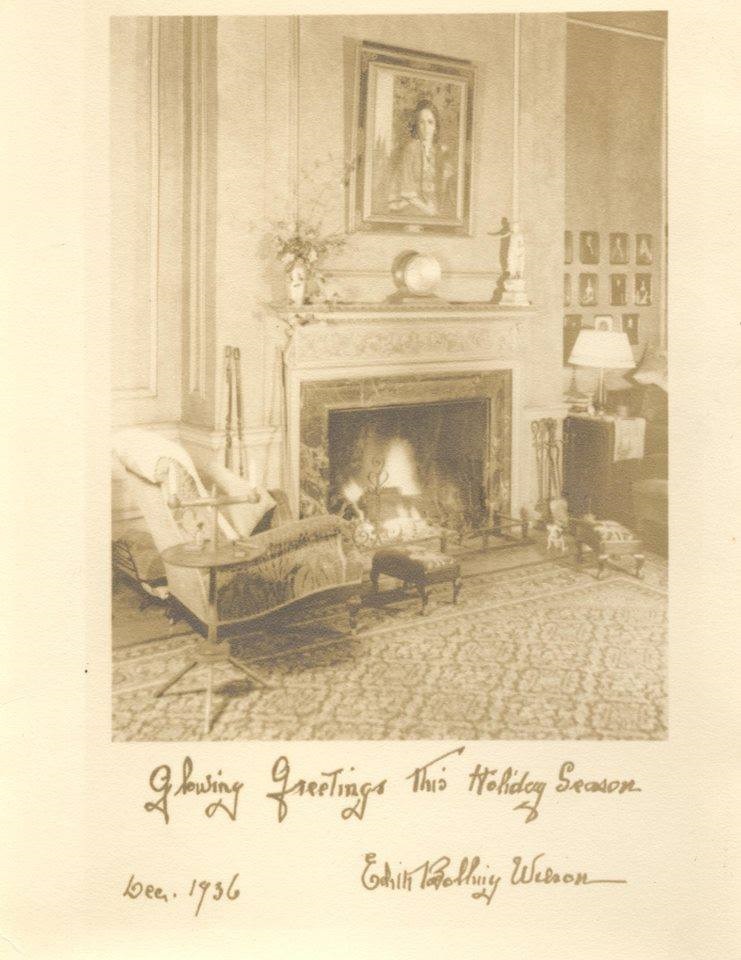
First Lady Edith Bolling Wilson’s 1936 Photo Holiday Card showing Tolentino’s statue on the mantle of the library fireplace, Woodrow Wilson House. Photo credit: Woodrow Wilson House.
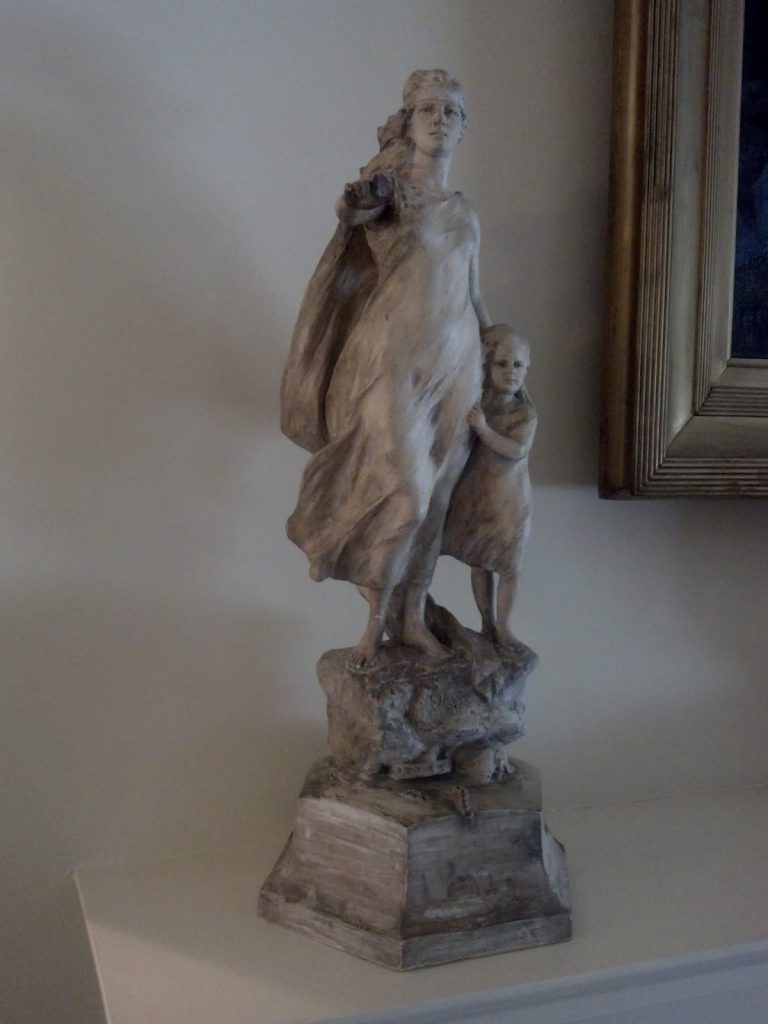
Tolentino’s mother and daughter statue. Photo credit: Woodrow Wilson House.
Jose Garcia Villa
Tiongson shared his findings on Garcia Villa as staff writer for the Office of the Resident Commissioner of the Philippines located on 1617 Massachusetts Avenue NW Washington DC. Garcia Villa published his celebrated anthology Have Come, Am Here,in 1942 while a DC resident.
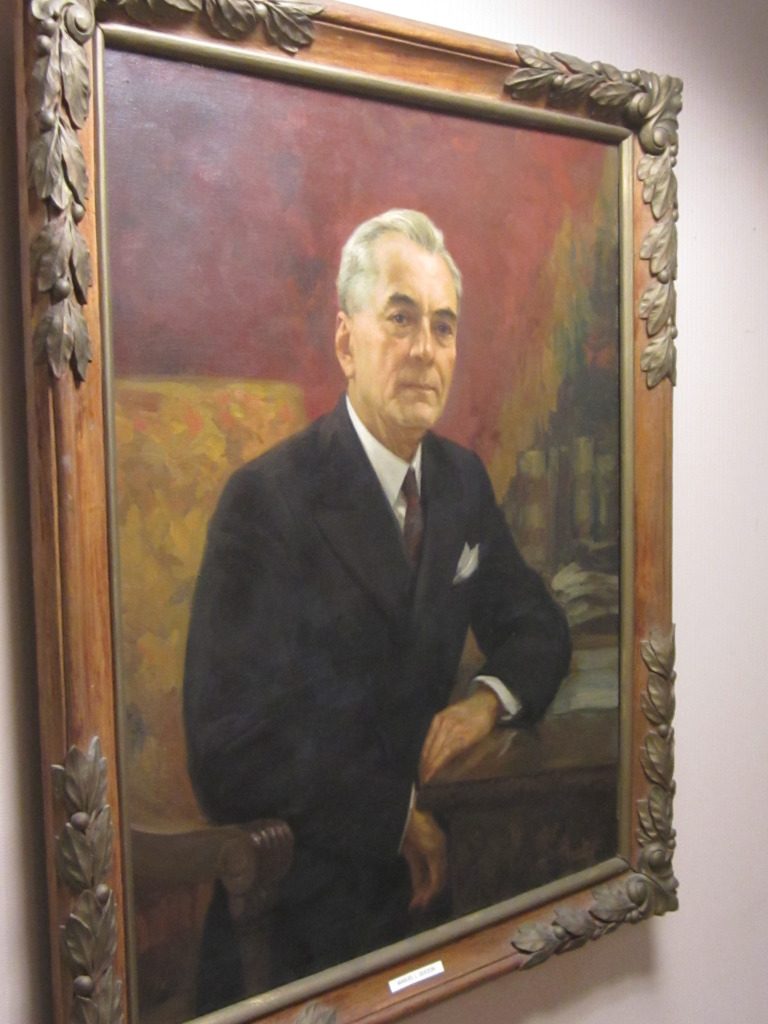
Portrait of Manuel Quezon by Fernando Amorsolo at the Philippine Embassy, Washington, DC. Photo credit: Philippines on the Potomac (POPDC) Collection
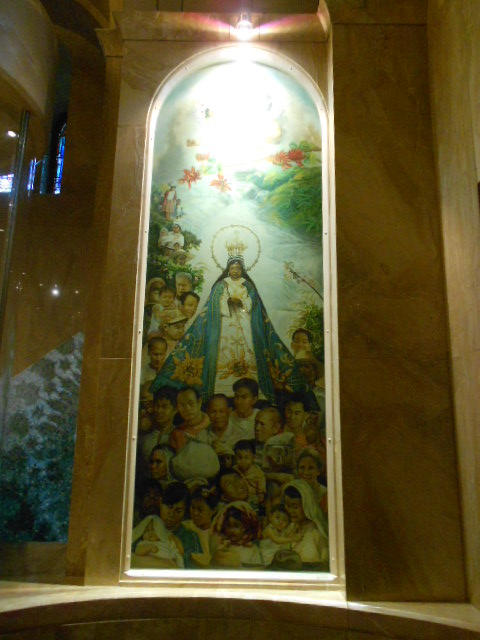
Blanco mural at the National Shrine, Washington DC. Photo credit: Philippines on the Potomac Project (POPDC) Collection
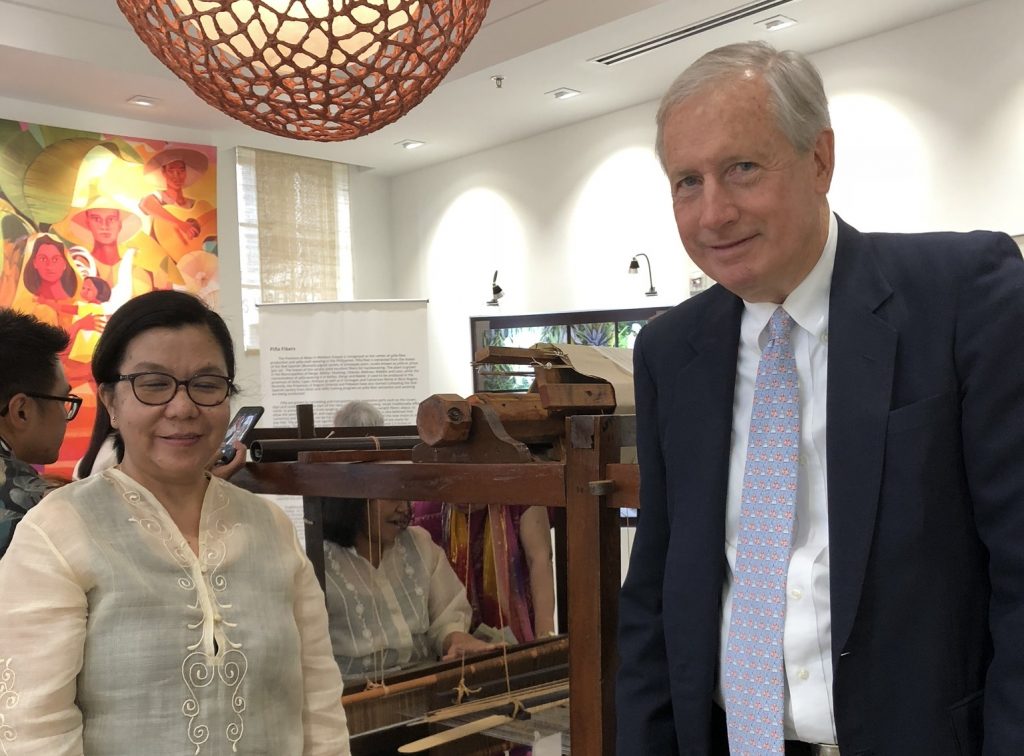
Pina Weaver Rhodora Sulangi (left) and Executive Director Hank Hendrickson,
Hibla Ng Lahing Filipino, June 10, 2018, Washington DC.
US-Philippines Society Executive Director Hank Hendrickson recalled how in 2013 super-typhoon Haiyan had devastated pineapple farms and production facilities in Kalibo, Aklan. Funds raised during a 2015 fashion show and 2016 concert in Washington DC helped to revive the local pina industry by providing hand looms, solar lighting, and trade and marketing assistance to the Aklan pineapple manufacturing and trade association composed mostly of women-owned small enterprises.

